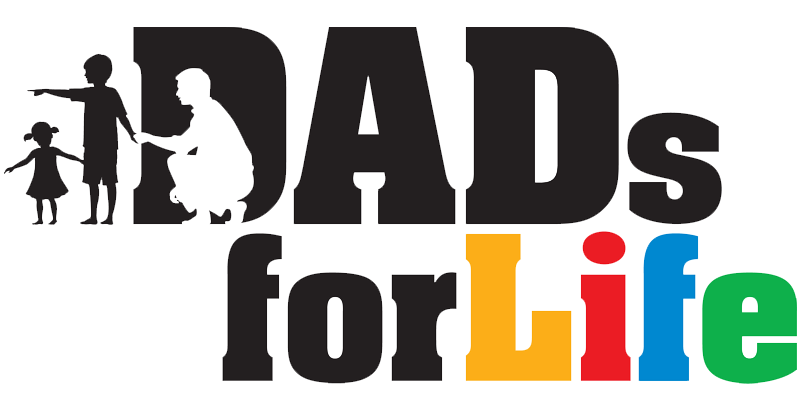Introduction
The following summarises research presentations and salient points of the discussion on fathering across diversity for Panel 2 of the first Asia Fatherhood Research Conference entitled Fatherhood in 21st Century Asia: Research, Interventions, and Policies.
Notable Research Findings
 Culture and Conduct of Fatherhood in India: Are They in Synchrony?: Dr Anjula Saraff, Stanford University
Culture and Conduct of Fatherhood in India: Are They in Synchrony?: Dr Anjula Saraff, Stanford University
The research examines whether men’s behaviour (conduct) with regard to the fathering role is in accordance with their beliefs (culture). This is important as asynchrony can create tensions within the family.
Dr Saraff selected 350 fathers of children aged zero to 10 in Mumbai, India by purposive quota sampling. Data was collected for the youngest child through semi-structured interviews.
The study found the following:
• While a new ideal of fatherhood is emerging – one that sees fathers taking a more active role in child caring and household chores – practice is slower to change, resulting in asynchrony between culture and conduct. This corroborated with La Rossa’s findings.
• A comparison between culture and conduct revealed synchrony for only the roles of surety and economic provider among seven. Refer to Figure 1.
Figure 1: Percentage of Fathers by Ideal and Practiced Fatherhood
- Caretaker: Being aware of the child’s needs and takes care of the child, including health matters.
- Surety: Plans child’s future; being concerned about child’s studies, etc.
- Economic Provider: Fulfils material requirements of the family.
- Playmate and Friend: Understands the child, being a friend and keeps the child happy.
- Role Model: Be a role model and inculcates good values.
- Family Head: Takes responsibility in all family matters.
- Resource: Treats child’s mother well; do any odd jobs for the child, etc.
• Fathers who show synchrony tend to be of the age group of 31 – 40 years, are better-educated, stay in nuclear families and have working wives.
• Fathers are confused between old and new values. Measures that can address this confusion include education, using appropriate mass media images, and conducting discussion groups with young fathers to spread awareness.
Being a Father in Malay Societies: Dr Suriani Suratman, National University of Singapore
The research explores whether there is an emergence of “the new father” (men who not only see themselves as economic provider, but also to provide daily care for their children) in Malay societies similar to roles of fathers in England, Canada and America.
She revisited earlier studies on Malay families in Malaysia and Singapore including classic works, e.g. Judith Djamor, Rosemary Firth. She also conducted her own survey on 10 Malay dual-income couples with young children in Singapore.
The study found the following:
• Malay ethnographies show that the organisation of Malay households was not initially based on gendered division of labour where men see to breadwinning and women to caregiving. Mothers often determined the responsibilities fathers should take on, and fathers were not unwilling to perform that which the mothers did not want to do or were unable to.
• However, since industrialisation, there has been a new emphasis on fathers’ economic provider role, which makes it challenging for fathers to continue with the child-caring role. She cited how official discourse such as the Singaporean Government’s provision and incentives for working parents reflect and thus reinforce the gendered view. For example, in the 2008 Marriage and Parenthood Package, the maternity was upped from 12 to 16 weeks while there was still no change to the 3-day paternity leave.
• The key factor determining parental roles now is their work schedules. The work-environment should be more family-friendly and encourage shared parental responsibility through more flexible working arrangements.
Are Single Fathers Different from Single Mothers? The Comparative Study on Seeking Help Behaviour of Single Parents in Taiwan: Dr Wang Shu-Ying, Dr Cheng C.H., National Chung-Cheng University, and Dr Hsieh Y.L., Asia University
Most of the studies on single parenthood focus on women even though the proportion of single mothers and single fathers are almost similar in Taiwan at 3:2. This study aims to understand the usage and limitation of current social services and related social policies for single fathers.
The study analyses the Taiwan annual survey of family income and expenditure for the composition and characteristics of single-parent families over the past two decades. Also, through in-depth interviews with 30 single mothers and single fathers, comparisons are made on gender differences related to living conditions and coping mechanisms.
The study found the following:
• Unemployment rate of single parents are 4.07%, much higher than non-single parents of 0.66%. Unemployment rate of single fathers is 6%, and mothers, 3.4%
• Describing it as a “quiet revolution on gender role”, many single mothers were already breadwinners before they became single; and many single fathers already unemployed.
Nonetheless, gender expectations persist. When single fathers cannot maintain a stable job, they are looked down upon. Single mothers, on the other hand, are accused of not being good mothers when they go out to work and spend less time with children or have new boyfriends.
• Single parents generally face similar challenges regardless of gender, but single fathers seek less help because society equates masculinity with independence and strength. Single fathers also have different coping mechanisms from single mothers. Single fathers prefer to be with other single fathers as well as to self-disclose to strangers through hotlines, unlike single mothers who prefer to confide in friends.
• As there are more female than male social workers, there is less understanding of challenges faced by single fathers. The study calls for more attention and help for single fathers.
Plenary Discussion
A participant wondered whether there could be more specificity in terms of the kinds of parental involvement observed for different types of families (e.g. dual income, absent fathers, children out of wedlock). He also asked how ready the society is to accept house husbands; and whether in those instances, it is an extension of pro-feminism or pro-humanism. Dr Saraff and Dr Wang noted that house-husbands are still stigmatized, though there is a slow move towards more acceptance.
Another participant weighed in on the house-husband issue, pointing out that there have been many studies documenting how mothers spend more on children’s welfare than fathers in poorer socio-economic communities, so a valid question is whether the house-husband is truly involved in caretaking or just going out drinking, for example.
The participant also felt that the gender norm debate here has been clouded and restricted. Care-taking and household chores need not be juxtaposed. The parenting issue here could have been addressed more holistically by factoring in support systems and infrastructure in the society.
The panellists noted that there are various contexts to consider. Fathering across diversity is certainly not an issue that can be covered comprehensively in this short time. But the conversation is necessary, be it to spark off awareness and action for single dads, policy changes to support better work-life balance, or just pouring resources into creating good role models.
Conclusion
There was general consensus that there is scant literature on fatherhood in Asia. Drawing upon related studies and their own research, the presentations revealed different fathering practices and beliefs in three different communities.
Another common theme was the increasing acceptance of more flexible arrangements between the father and the mother. More changes that are to come are likely to be gradual, or “quiet”, echoing what Dr Wang’s “quiet revolution on gender role”.
Lastly, there are learning points for all of us. Policy-makers and social service providers in particular should look more carefully at support for single fathers as well as enabling fathers to practise good fathering. The Government could also do more to enforce better work-life balance practices and be careful to not deepen gender stereotypes.
References:
- Anjula Saraff (2010). Culture and Conduct of Fatherhood in India: Are They in Synchrony? Proceedings from International Conference on Fatherhood in the 21st Century Asia: Research, Interventions, and Policies, Singapore.
- LaRossa, R. (1988). Fatherhood and social change.
- Suriani Suratman (2010). Being a Father in Malay Societies. Proceedings from International Conference on Fatherhood in the 21st Century Asia: Research, Interventions, and Policies, Singapore.
- Djamor, Judith (1959). Malay Kinship and Marriage in Singapore.
- Firth, Rosemary (1966). Housekeeping among Malay Peasants.
- Wang Shu-Ying, Cheng C.H., and Hsieh Y.L. (2010). Are Single Fathers Different from Single Mothers? The Comparative Study on Seeking Help Behaviour of Single Parents in Taiwan. Proceedings from International Conference on Fatherhood in the 21st Century Asia: Research, Interventions, and Policies, Singapore.
About the Author: The Dads for Life Resource Team comprises local content writers and experts, including psychologists, counsellors, educators and social service professionals, dedicated to developing useful resources for dads.
First published on 24-05-2011.
